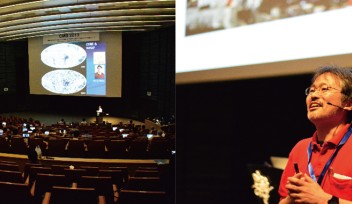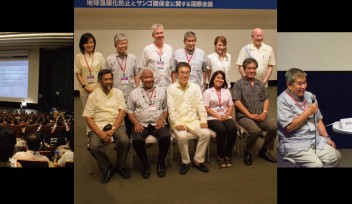Quantum walking the walk on synthetic temporal photonic lattices
An international research team including scientists from Canada, Germany, Italy, and Japan have today published in Nature Photonics their demonstration of a scalable quantum processor based on the discrete-time quantum walk of time-bin-entangled photon pairs on synthetic temporal photonic lattices. The team lead by Professor Roberto Morandotti of INRS discovered a synthetic photonic network capable of generating and manipulating quantum states of light. Their results show how temporal synthetic dimensions can pave the way towards efficient quantum information processing, offers promising prospects for applications ranging from quantum computing to secure communications.
Quantum Walks
Our advancement is based on the concept of quantum walks, which have revolutionized quantum computing over the past 20 years by increasing the speed and complexity of algorithms. Our innovation lies in the use of synthetic photonic networks, which replaces the real spatial dimension with an artificial dimension encoded in the photon’s state. This significantly reduces the complexity of the necessary devices. These networks allow for scalable systems capable of processing quantum information with a lightweight infrastructure, relying on fiber optic devices compatible with current telecommunications technologies and on-chip microprocessors.
Professor Roberto Morandotti says “Our approach enables unprecedented control over quantum walks in the temporal domain and the simultaneous manipulation of classical light and entangled photons.”
Future Implications
Photons are well-known natural carriers of quantum information that are able to carry, process and manipulate them. Single photons are able to have multiple qubits or qudits encoded onto them. Professor William Munro mentions “that unique advantage combined with our temporal synthetic dimensions has far reaching implications in fields ranging from quantum computing, imaging & sensing to secure quantum communication.”
Publication Details:
Monika, M., Nosrati, F., George, A. et al. Quantum state processing through controllable synthetic temporal photonic lattices. Nat. Photon. (2024). https://doi.org/10.1038/s41566-024-01546-4
論文情報













